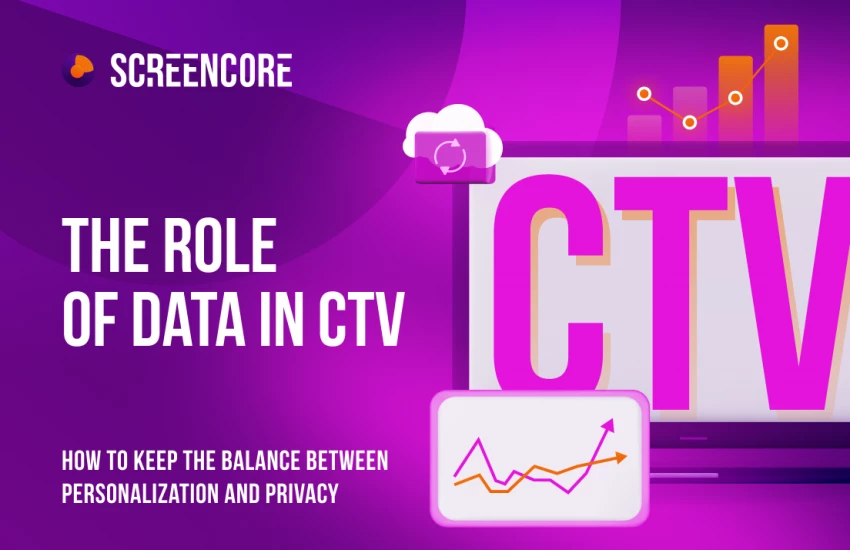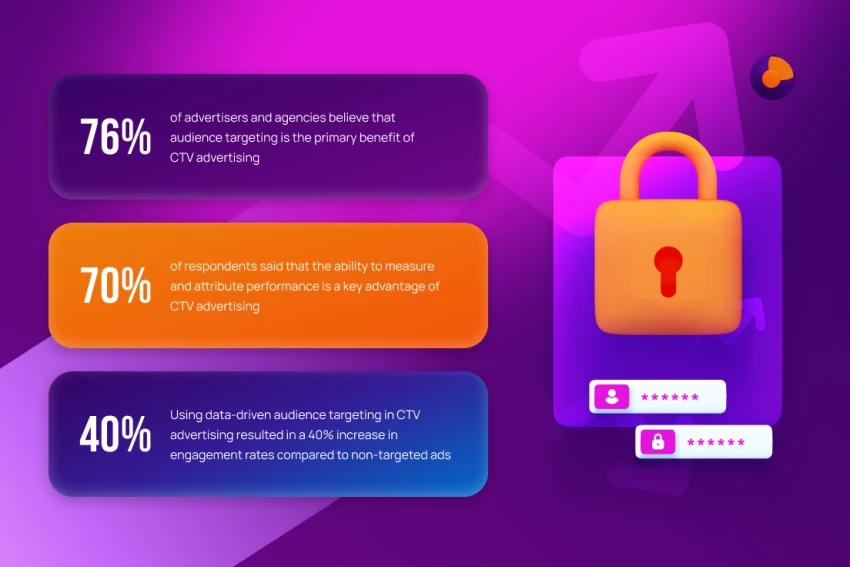The role of data in CTV: how to keep the balance between personalization and privacy

The popularity of connected TV has been climbing for some time and has become a more effective way for brands to reach audiences at home. One of the critical advantages of CTV advertising is the ability to leverage data to deliver personalized messages to viewers. People know what they want regarding digital content and how they want to enjoy it.
As a consumer, advertisers may collect various data about you to better understand your interests, behaviours, and preferences. Advertisers may collect information about your age, gender, income, education level, and other demographic factors. This information can be used to create targeted campaigns more likely to resonate with your interests. Advertisers also may track your online browsing history, search history, location, and social media activity to understand what types of content you engage with and what influencers or brands you follow.
Audience targeting: why is it so important

According to the "CTV Advertising: A Detailed Look at the Opportunity" report, 76% of advertisers and agencies believe that audience targeting is the primary benefit of CTV advertising. In the same survey, 70% of respondents said that the ability to measure and attribute performance is a key advantage of CTV advertising.
A study by The Trade Desk found that using data-driven audience targeting in CTV advertising resulted in a 40% increase in engagement rates compared to non-targeted ads. In simple terms, the better you know your audience, the more results you have.
To develop an effective marketing strategy, it is beneficial to target a specific audience rather than trying to reach everyone at once. This allows your company to craft messaging that directly appeals to consumers who are more likely to convert into customers.
Refining your audience is also cost-effective since campaigns can be run on a smaller, more focused scale. For instance, instead of sending direct mail to every local household, targeting consumers already interested in your products or services can provide a better return on investment.
Thin ice: where is the line between personalization and privacy
Data privacy concerns are on the rise in the world. According to a Statista report about current attitudes toward personal data used in the U.S., 2021, most respondents were concerned about their data being collected online. Only 17% agreed they weren't worried at all.
We have good news: companies try their best to keep the line between personalization and privacy for their consumers. But sometimes, it can be challenging to define, as it can vary based on individual perspectives and cultural norms.
Generally, the line is crossed when viewers' personal information is used without their knowledge or consent. Moreover, personalization becomes problematic when it involves collecting and using viewers' sensitive information, such as their location, health information, or financial data, without their explicit consent.
Another concern with personalization is the potential for discrimination. If personalization efforts are based on factors such as race, gender, or age, they could result in discrimination or perpetuate harmful stereotypes. For example, if an advertiser uses data to target specific demographics with certain types of messaging, they could be perpetuating harmful stereotypes or excluding certain groups from receiving relevant messages.

Some methods that help you to keep balance
Advertisers must prioritize transparency and consent to avoid crossing the line between personalization and privacy. Advertisers should be upfront about what data they are collecting and how it will be used. They should also allow viewers to opt out of data collection or to choose what type of data they are willing to share. In addition, it is essential to protect viewers' data from unauthorized access or breaches.
Moreover, advertisers must also prioritize data security. Data breaches and cyber-attacks can have severe consequences for viewers and advertisers. For example, Screencore takes steps to protect its viewers' personal information, such as using secure data storage and encryption methods.
Another way to balance personalization and privacy is to give viewers more control over their data. For example, companies like Apple are giving back consumers a choice on what data they want to share with retailers and what personal data is. Advertisers can allow viewers to opt out of data collection or choose the type of data they are willing to share. This respects viewers' privacy and will enable advertisers to collect data from viewers willing to share it, resulting in more accurate targeting and a better user experience.
It is also essential to be mindful of security laws. For example, at Screencore we care about our customers. That's why our marketplace is adapted to seamless and legitimate ad serving. We are sure that advertisers must ensure that their targeting and personalization efforts do not discriminate against certain groups or perpetuate harmful stereotypes. Our company carefully considers the data used and the messages conveyed.
Certainly, this is not news that advertisers collect data about consumers to create more targeted and personalized advertising campaigns. But you can keep calm because professional advertisers prioritize transparency, consent, and data security to ensure that consumers know what data is being collected and how it is being used.
.webp)
